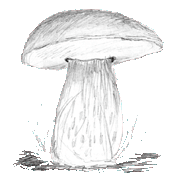| 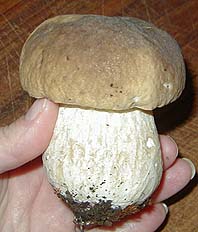
| | English Name: CEP, Penny bun, Porcini, Cepe, King Bolete | | Norwegian Name: Steinsopp | | Latin Name: boletus edulis | | This was a fairly young specimin I found growing along a path. Can be dried or frozen. | |
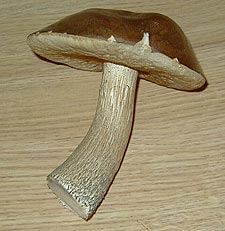 | | English Name: Brown Birch Bolete | | Norwegian Name: Brunskrub(svartskrub?) | | Latin Name:Leccinum scabrum | | These have been growing around the apartment buildings this year since July. I've picked between 20-30 of them close by home. Not as nice a texture as Porchini or Bay Bolete, but good if you get them young. Some books say they dry well, others say they don't. I did not have any trouble drying young specimines. | |
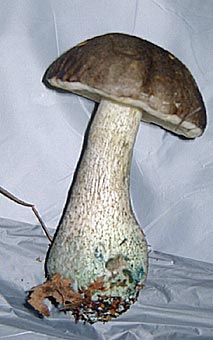 | | English Name: Brown Birch Bolete | | Norwegian Name: Svart skrub | | Latin Name: Leccinum variícolor | | This is a variety of the Birch Bolete which is distinguished by it's darker hat, and by a turquoise colored bruising that it gets, especially around the base. | |
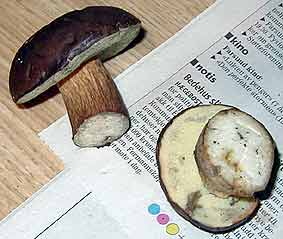 | | English Name: Bay Bolete | | Norwegian Name: Svartbrun rørsopp | | Latin Name: Xerocomus badius, Bolétus bádius | | This is one of my favorites of the bolete family. They are fairly easy to identify because of the blue-green bruising when cut or handled. They are also one of the last ones to be bothered by bugs. If you want to see the biggest mushroom(680 gram) I've ever found of this kind, click here! | |
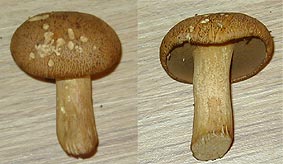 | | English Name: | | Norwegian Name: sandsopp | | Latin Name: | | Another bolete found around here...not quite as good as Bay Boletes or Cepes, but usuable when not too old...they tend to get buggy fairly quickly. | |
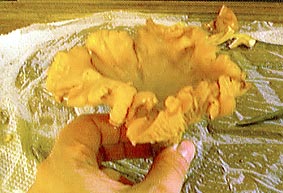 | | English Name: Chanterelle | | Norwegian Name: Kantarelle | | Latin Name: Chantharellus cibarius | | One of the most sought after mushrooms in Southern Norway....in good years, you can be lucky and pick several kilograms of these. I've never found so many, but an occational one does add flavor to dinner once in a while! | |
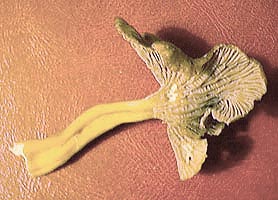 | | English Name: Winter Chantarelle/Trumpet Chantarelle | | Norwegian Name: Trakt kantherelle | | Latin Name: Cantharellus infundibuliformis Cantharellus tubaeformis | | One of the easiest to find in one way..in another the hardest. They blend in with fall leaves very well and grows often amongst the low lying Norwegian wild blueberry bushes. However, once you find an area where they grow, you may easily find thousands of theys little gems! they are thinner and not as bright as regular chantarells, but they smell and taste very similar. They are best picked by pinching them off at the lower stem which is easy as they are hollow. When you get them home, you can either use them after cleaning or dry them easily by stringing them and hanging them in a warm place to dry. Don't put them in the oven! They get soggy rather than dry! When you rehydrate these, use the water as a basis for sauces and soups. | |
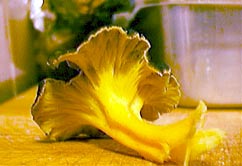 | | English Name: Yellow footed chantharelle | | Norwegian Name: Gul trompet-kantarell | | Latin Name:Cantharéllus lutéscens (C. xánthopus) | | Very similar to the Winter Chantarelle in appearence, but often darker on top and very yellow or orange on the bottom. Less common than the Winter Chantarelles. | |
